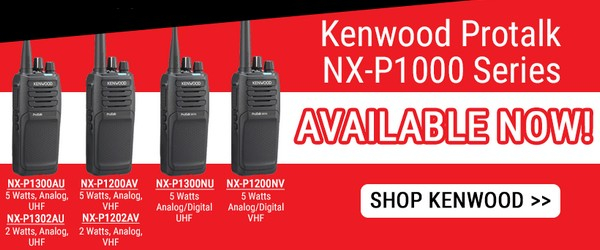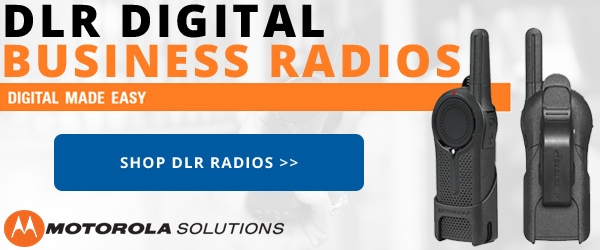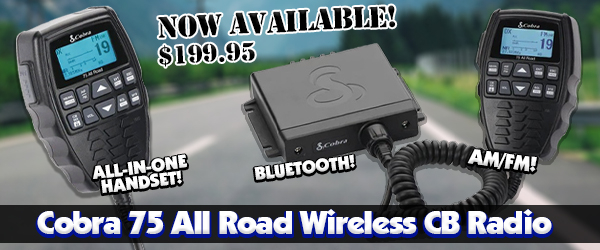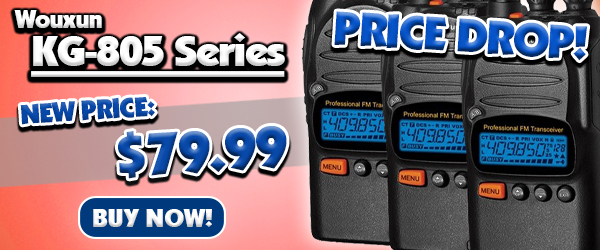
Updated April 4, 2022
If you own or have ever shopped around for an emergency or weather radio, you may have heard the acronym S.A.M.E, or the term SAME. It's often thrown around in product descriptions and mentioned in marketing brochures for NOAA weather radios or even some consumer two way radios with weather channels and alerts. But what is SAME? What does this technology do? How does it work, and why is it considered such an important feature in a weather radio?
What is SAME?
SAME is an acronym for Specific Area Message Encoding. It is a digital protocol or code used to send a 1050 Hz warning alarm tone and encoded alert message for audible and/or visual reception on radios equipped to receive and decode such messages. It was originally developed by the National Weather Service in the late 1980's and was eventually adopted by the Federal Communications Commission in 1997 as part of the EAS (Emergency Alert System). Today the SAME protocol is used in both the United States and Canada as a standard component of national emergency weather alert broadcasts in these countries. It is used as part of the NWR All Hazards Alert network of weather radio stations that broadcast weather and other emergency information across the United States.
How SAME works
A SAME alert message includes a digital header with a SAME code designating the type of alert being sent and the affected area (or county) to which it is being sent. A radio equipped with SAME technology receives the code, decodes it, activates a 1050Hz warning tone to get the attention of the listener, and proceeds to activate and/or display the message being broadcast.
The NWS emergency broadcast transmitters typically cover about a 40 mile radius, although coverage may be considerably less in more remote or mountainous areas. Each area or county in the NWR network is assigned a six digit SAME code unique to that specific area. To receive warnings and alerts for a designated area or county, the proper SAME code must be programmed into the radio. Some radios may allow the user to program multiple SAME codes to allow the radio to receive warnings and alerts for more than one area. This can be quite a handy feature, especially when traveling to other areas outside your primary location.
Once the SAME code for a specific area is programmed into the radio, an emergency or alert broadcast from an NWS office with that code can activate the SAME receiver and transmit the alert message through the radio.
Why SAME is important
There are many radios on the market today equipped with weather channels and alerts, and that's a good thing. Whether you're indoors or out, you need to stay informed of changing weather conditions, especially when things become potentially hazardous.
It isn't just weather, either. Other emergency situations can arise, and you need to be alerted to them, as well. In such situations, an emergency radio isn't just handy, it can potentially become a lifesaver.
However, every emergency situation or alert does not affect everyone, and a sweeping radio broadcast over a broader area may not even apply to yours. Just because you hear the message doesn't mean it is intended specifically for you. But how can you know?
That is where SAME technology comes in. With a specific code designated for a specific area, SAME aims specific alerts directly to their intended audience. Those 3 AM weather and other emergency alerts intended for your area can wake you, keep you informed and at the ready, while alarms and alerts intended for other areas won't interrupt, annoy or disturb you.
Of course, to program the SAME radio, it is necessary to know the correct code for your area. It's easy. All you need to do is visit the NWS NOAA web site and look it up. You can search for County Coverage Listings by State or download a complete list of same codes for all states and counties in simple text.
Weather Radios with SAME
Here is a chart of popular radios equipped with SAME technology:
| Make/Model | Type | Band | SAME | Two Way Radio |
|---|---|---|---|---|
| Midland WR400 Deluxe NOAA Weather Radio | base station | AM/FM/Weather | YES | No |
| Midland WR-120 Weather Radio | base station | Weather | YES | No |
| Uniden BCT15X Beartracker Scanner | base/mobile | Multiple | YES | No |
| Uniden Oceanus D UM415 Submersible VHF Marine Radio | fixed mount | VHF Marine | YES | YES |
| Uniden UM385 Fixed Mount VHF Marine Radio | fixed mount | VHF Marine | YES | YES |
| Uniden UM435 Fixed Mount VHF Marine Radio | fixed mount | VHF Marine | YES | YES |
| Cobra Marine MR-F45-D Class-D VHF Marine Radio | fixed mount | VHF Marine | YES | YES |
Want a more in-depth discussion about weather radios, including those with SAME technology? Listen to The Two Way Radio Show Podcast episode TWRS-13 - Emergency and Weather Radios.











How much overlap does SAME utilize regarding the transmitter sites? For example, the counties to the west of me are where most of my summer storms originate but the transmitter that covers those counties is difficult to receive. The transmitter in my county is easy to receive....will it decode and activate on the western counties messages and alert me if I tune the receiver to my county and add the western county codes???? I would think this scenario would be verry common but I don't recall ever seeing it covered. And what if the western counties are in a boarder state? SC/GA for example.
The NOAA weather stations cover specific areas and will usually announce which areas they cover during routine broadcasts. The SAME alerts are broadcast for those specific areas. For instance, if a transmitter covers an area that includes two or more bordering states, it will serve that coverage area across those states, regardless of the borders.
Thanks for the informative post.
But now is the time for an update. Almost all products in your list is discontinued models!
The chart is updated as of April 4, 2022. Thanks for letting us know!